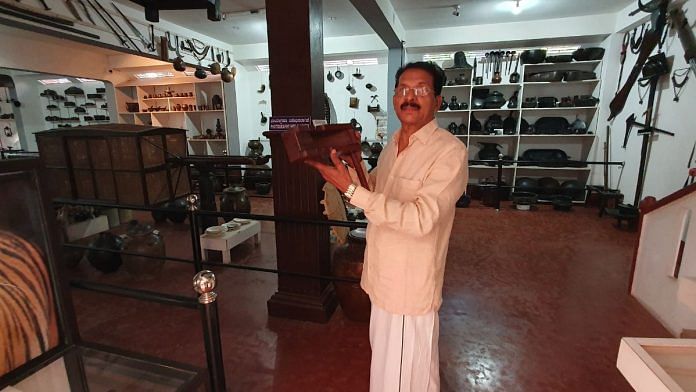A group of around 20 men, dressed in white shirt and trousers, carrying placards and wrapped in maroon shawls — unlike the recognisable green representing pro-farmer, or saffron usually associated with pro-Hindutva, or blue standing for Dalit identity — landed at the Uddupi District Collector’s office. Unhappy with the alienation received at the hands of their own state government that has issued a gazette notification establishing Kannada dominance, the Tulunad activists are reigniting a decades old demand of greater recognition of their culture and the Tulu language that’s predominantly spoken in the coastal districts of Karnataka.
A new language war is brewing in Karnataka. And the so-called serial offender Hindi isn’t part of it.
The Congress-led Siddaramaiah government made it mandatory for business establishments to ensure that at least 60 per cent of the text on their signboards is in Kannada and finds space on the upper half of the board. This has angered the Tuluvas who are now demanding that at least 30 per cent of any signboard in the state be in Tulu, 50 per cent in Kannada and the remaining 20 per cent in any other language.
“Tulu groups warned Kannada groups against suppressing Tulu rights by building Kannada-centric organisations in Tulunad with the help of local Tuluvas. The tactics used by Kannada groups resembles the tactics used by Britishers to suppress Indians with the help of Indians,” said a post on X.
A Tuluva’s comment on the above post was quickly met with a demand for “Kannada translation”, to which came the reply:
“You mean we should tell #StopKannadaImposition in Kannada?”
You mean we should tell #StopKannadaImposition in kannada ?
— തുളു രാജ്യൊ /तुळु राज्य (@drsudhirn) March 12, 2024
The Kannada-Tulu bitterness is showing up in the southern state and it goes beyond just signboards. The calls to stop the imposition of Kananda come even as the Siddaramaiah government continues to target BJP and PM Modi for imposing Hindi on non-Hindi speaking states. Social media sentiment shows the demands for a separate state that had died down with the reorganisation exercise in 1956 are gaining a new lease of life. From plans of publishing an abridged version of ‘Ancient Karnataka history of Tuluvas’ to defending Aishwarya Rai Bachchan against remarks made by Rahul Gandhi, and running a museum with thousands of tools and household items collected from traditional Tuluva homes, the Tuluvas have decided to take the identity fight to a new plain and ‘recognition’ seems to be their keyword.
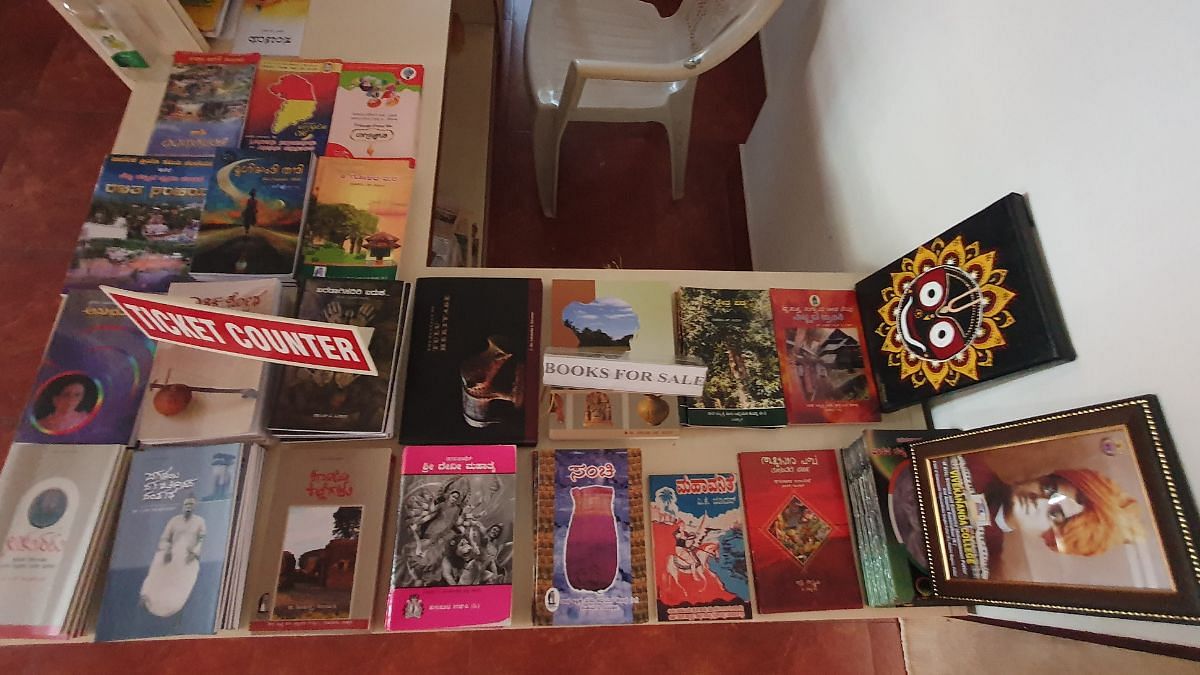
Tuluva literary resources and folklore are being unearthed and dusted off to establish the richness and contribution of the community. The Tulu Lippi has at least 500 years of documented history. Today, these writings can be found on a few banners, temple entrances and even in election campaign posters. In this quest for identity and recognition, even the latest face of Kannada popular culture — Rishab Shetty’s blockbuster action thriller Kantara — hasn’t been spared. Tuluvas allege the film misrepresents their culture.
The Tulunadu movement, however feeble, encapsulates similar sub-regional struggles for identity or separate statehood in other parts of the country, including Vidarbha in Maharashtra, Saurashtra in Gujarat, Bodoland in Assam, Kongunadu in Tamil Nadu, Maru Pradesh in Rajasthan as well as Poorvanchal, Awadh, Bundelkhand in Uttar Pradesh.
Also read: A grand socialist revolution is now a curse. Rajasthan villages can’t exit Vinoba’s Gramdan
‘Appropriating Tuluva achievements’
The Tuluvas are going back to history to establish their presence in the future. Tukaram Poojary, a 63-year-old retired professor is working on finding a sponsor to produce a short handbook of 40-odd pages from Bhasker Anand Saletore’s 600-page book ‘Ancient Karnataka history of Tuluvas’ for easy read. Twentieth-century author and historian Saletore’s work delved deep into topics such as the Vijayanagara empire and the relations of the Aloopas (local rulers) with empires beyond the Indian shores.
Young Tuluvas are well-versed with certain aspects of their culture and are concerned on how all of this is portrayed on social media and other platforms.
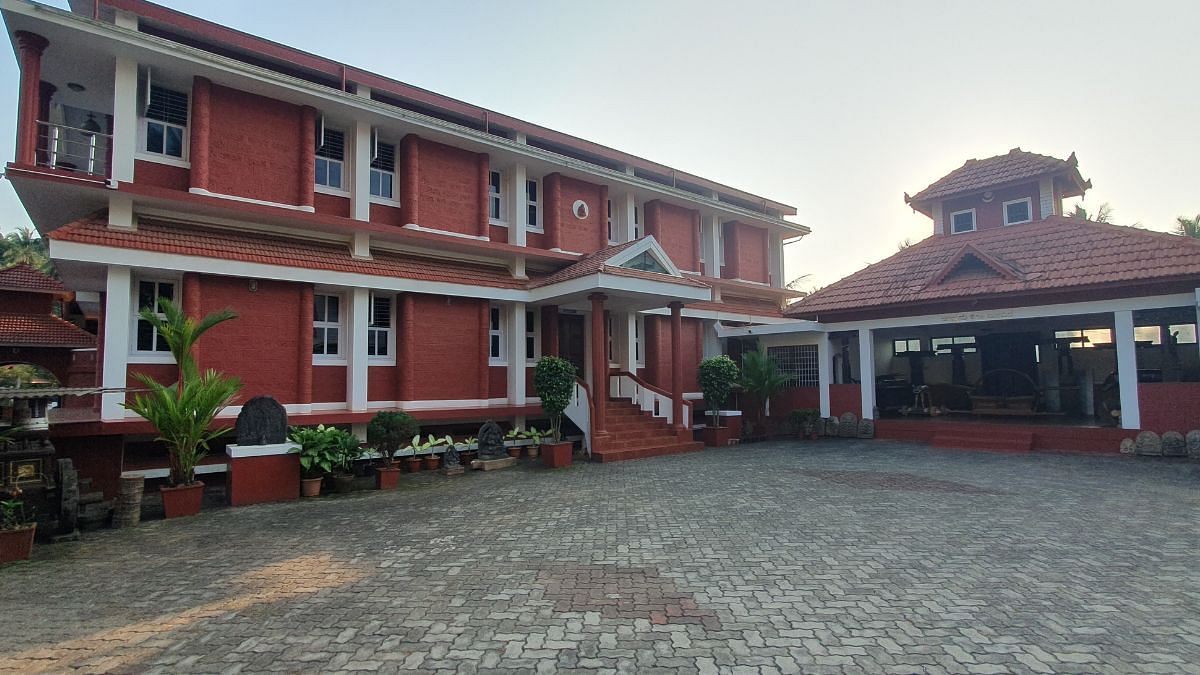
“We want to find someone to sponsor the publishing of the book which they can make a tribute or memory of their parents. Around 500 copies will cost at least Rs 20,000. But the book won’t sell,” he sighs.
A connoisseur of Tuluva culture, Poojary’s past failures in selling similar books or promoting his culture has not dampened his spirits even though the demands for statehood stands diluted.
“At the time of reorganisation of states, Tulu with its written and folk history could have been given statehood. But now we are not asking for it. Instead, we want the language and culture to get its due place and respect,” says Poojary.
The term ‘Tulunadu’ refers to the coastal districts of Karnataka and some parts of Kerala but how it is perceived by the likes of Poojary and the young members of the community is worlds apart.
When Rahul Gandhi mentioned the presence of Bollywood actor Aishwarya Rai at the opening of the Ram Temple in Ayodhya in his attack on the Modi government, it was termed as an insult to the Kannadigas.
But Prashanth Ballal, a young Tuluva, called the Kannadiga’s anger an ‘appropriation of Tuluva achievers’ culture since the actress belongs to the Tulunadu region.
Despite the Siddaramaiah-led Karnataka government assuring the Tuluvas of having sought details from states like Bihar and Andhra Pradesh on steps taken to adopt their respective second languages, the community members aren’t impressed. In 2021, the Bihar government said that it will use dialects of Bihar — Bhojpuri, Maithali, Magadhi — as a medium of instruction in schools. And Urdu has been its second language since August 1989.
Both Telangana and Andhra Pradesh have Urdu as their second language.
Also read: RWAs are waging a war against Muslims—within societies, on WhatsApp groups
When the Tulunadu cause was sacrificed
Vishnu, a 35-year-old journalist-turned-corporate professional, who lives in Hyderabad,says that there was no Tulu movement to begin with. He points out that the first Kannada newspaper and first Kannada dictionary were printed in Mangaluru and that eminent Kananda writers came from this region. One of the earliest writers in Kannada, Somaraja Kavi Devarasa belonged to the Chowla dynasty of Moodabidri in modern-day Dakshina Kannada district. There are others like Bhujabali Shastry, Palakala Seetharam Bhat and the likes of Umanath Shenoy, who published works like ‘Bangara Ithihasa’, ‘Puttur Kshetrada Ithihasa’, ‘Kannada Sahityake Moodbidirya Koduge’ among others.
Tulu is among the ‘Pancha-Dravida’ languages, counted in the pantheon of Tamil, Kannada, Telugu and Malayalam.
The speakers of the other four had their states based on their tongue and regions with Tulu-speaking people were merged with Karnataka in 1956. Prior to this, these parts were under the Madras Presidency.
While the youth of the community dream of a Tulunadu, the older generations have limited demands and want Tulu to become the second language in Karnataka, included in the Eighth Schedule of the Constitution and Yakshagana — the folk dance popular in coastal Karnataka — declared as the state’s official art.
“There’s a reason for that. Tulunadu, like Karnataka, has always accepted diversity as a fact of life. Tulunadu has never meant a land of people who may speak Tulu or Beary or Konkani or Kannada or Malayalam even,” says Vishnu.
Those in the Kannada-speaking regions of Udupi such as Kundapura say there was no real fight for Tulunadu to begin with. Vishnu agrees with them but at the same time admits to a growing clamour for recognition on the ground.
“The land from Kundapura to Kasargod is what we call Tulunadu. This extends from River Payaswini in the south to Brahmavar in the north. But I want a Tulunadu that is not politically-driven or continues to chip away at its roots to accommodate modern practices,” says Athiradi Amrita Shetty, a prominent writer and activist, based in Belthangady taluka of Dakshina Kannada district.
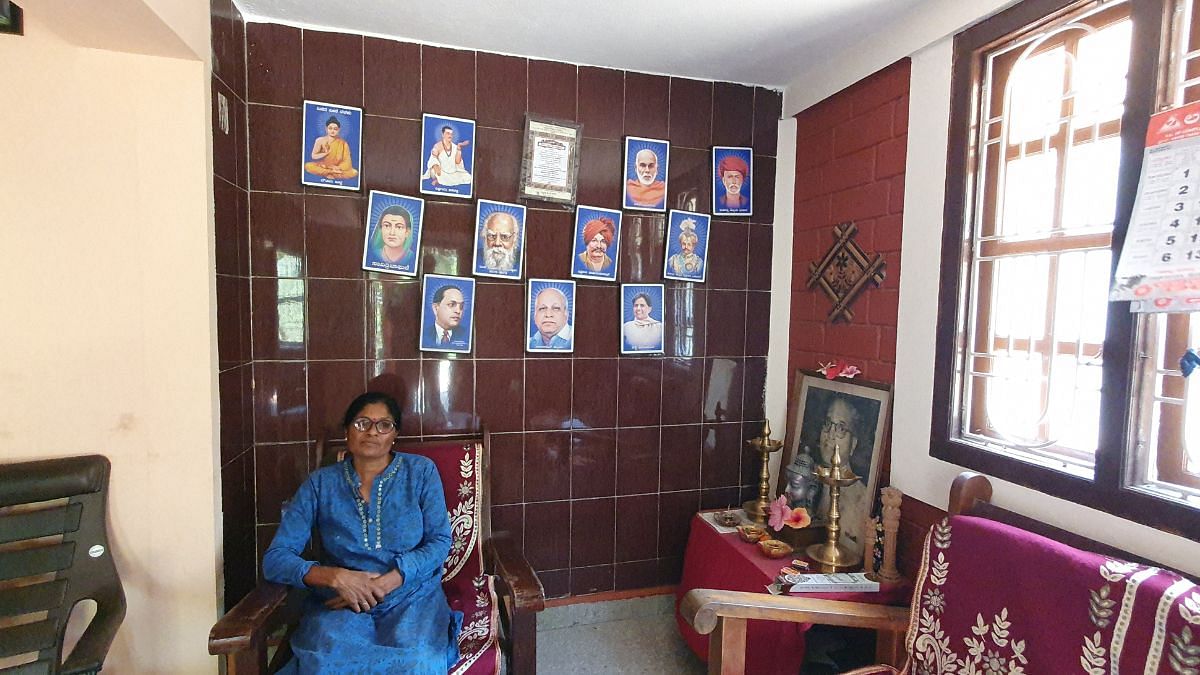
Similar noise can be heard in the neighbouring district of Kodagu—a coffee growing region that’s demanding statehood or at least recognition of the Tulu language and script.
Prateek Ponnanna, the state president of the Karnataka Linguistic Minorities Association, has written to the Karnataka government to include Kodava language in the sign boards across the district. The demand for statehood was led by the likes of N.U. Nachappa who formed the Codava (Kodava) national council to fulfil the cause but later abandoned their claims. They later rallied around special status for the language; Kodava Tak.
In the early 1930s, literary personalities like S.U. Paniyadi, who wrote ‘Sati Kamale’ — the first Tulu language novel in 1921 — took up the cause for Tulunadu but politicians at the time did not take it with the same vigour, says Poojary.
In 2021, Dakshina Kannada MP Nalin Kumar Kateel, put out banners and social media posts in Tulu with the assurance that efforts were on to include the language in the Eighth Schedule of the Constitution. Some social media handles also promote branding on consumer items in Tulu language.
That the Tulu cause has been sacrificed in the bigger language agitation is evident. “When the movement for reorganisation of states culminated (in 1956), the unification of Karnataka became more important,” says Prof Chinnappa Goudar who taught at Mangalore University.
This, he says, led to ‘Gouna’ — Tulu word for neglect.
The first loss to the movement was Kasargod, one of three districts that has a high-speaking Tulu population, to Kerala.
In the 1970s, demands were diluted with academics demanding the renaming of erstwhile south Canara district as Tulunadu. According to the Karnataka government, Dakshina Kannada was earlier alluded to as ‘Tulunadu in Agananooru, a Tamil sangam anthology.
Instead, the district was divided into two — Udupi and Dakshina Kannada. The latter became an embodiment of Kannada rather than Tulu.
Also read: Bengaluru is fighting street crime & road rage the only way it knows — tech
‘#StopKantara2’
Kannada blockbuster Kantara was a pan-India success but it didn’t hit the right chord with the Tuluvas. It’s a ritual and a celebration that the film got wrong.
The movie, directed and anchored by Rishab Shetty, showcased the rich cultural heritage of the region but with modern twists. Among other things, the film was criticised for picturising the ‘Dhaivaradhane’, a sacred practice as a performance.
At Bajpai, a village about 11 km from Mangaluru airport, is packed with visitors. The sound of traditional drums fill the air amid all the noise, honking and people walking into the main temple complex.
Inside, traditional drums play alongside trumpets and bugles as the ‘Dhaivaaradhane’ practice comes alive. A ‘Dhaiva’ or ‘bhoota’—an oracle—is invoked to bring prosperity, good health and even arbitrate family disputes.
A group of brightly painted faces, wearing garland, ornamental headgear and a skirt made out of tender palm leaves dance as ostentatiously as the Bhoota. The Bhoota Kola takes place largely during the Nemotsava where spirits of the revered ‘Panjurli’ and dreaded ones like ‘Guliga’ are invoked. Both are two popular forms of Dhaivas.
But the use of the Dhaiva, as picturised in the movie and the songs, in pubs, hotels, and in memes has infuriated Tuluvas who hold these traditions sacred.
Vije Shetty, a ‘Tuluva techie’ working in Bengaluru, says that Dhavias are not meant to be showcased as performers but revered as gods.
He blames the makers of Kantara, the story for which is based in these very parts of Karnataka.
“You can see how Dhaivaradhane, which is revered and sacred, is being used like a performance,” he says.
Shetty has since used the #StopKantara2.
He also blames the movie for making ‘Bhoota Kola’ being seen as some pop-culture reference, including playing the song Varaharoopam from the movie — picturised on the Dhaivaradhane — in pubs.
Amrita Shetty despises a ‘packaged’ presentation of the traditional Bhoota kola that was earlier a private affair and confined to villages.
‘Bhoota’ refers to ‘past’ or ‘ancestors’.
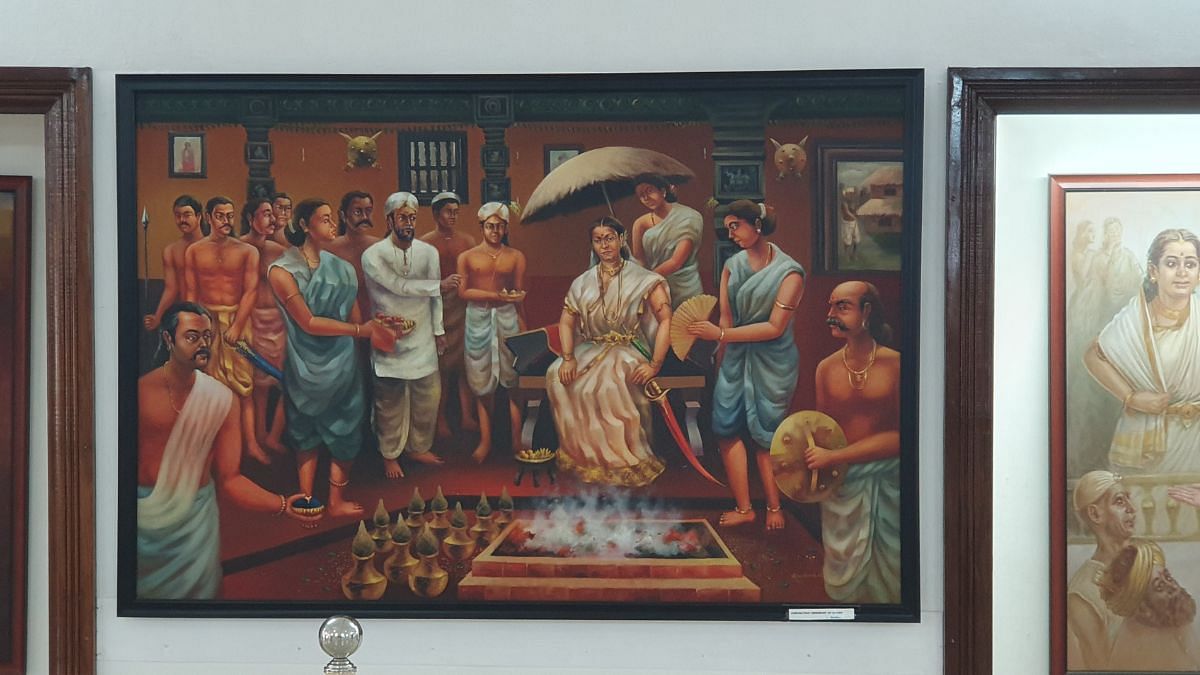
Amrita Shetty claims Daivaradhane has increasingly become more ‘Brahminised’ as the person donning the role of ‘Bhoota’ has to abstain from eating meat, and is required to purify himself which goes against the very root of this practice.
“The Aradhana (colour) used to paint the Bhoota’s face comes from the bark of a particular tree. But now make up kits are used,” she says. Flanked by pictures of Dr B.R.Ambedkar, Narayana Guru, Periyar and Basavanna at her home in Belthangady, Amrita Shetty is vocal against the diluting rituals and caste-discrimination that Bhoota Kola nartakas face when they return to normal life.
“Only on the day of the Kola, the dominant communities bow down to him. Other days, he becomes a Dalit and an untouchable again,” she says.
Only members of communities like ‘Nalike’ ‘Parva’ and ‘Pambada’ among a few others can don the role of a Bhoota. All these communities are classified as SC in Karnataka.
Even Amrita’s 27-year-old son questions the ‘purity’ of the ritual. “These days, people search on YouTube as to who the best Dhaiva Nartaka is and hire them to perform.”
But the elderly aren’t surprised.
Mohan Alva, the 72-year-old chairman of the Alva chain of medical and educational institutions, is far more practical in his approach.
“Culture and tradition is like flowing water. There will be change and that’s nature,” he says.
Alva is among the leading voices that compiled and submitted a report on the state of Tuluva culture to the BJP government in the hope that they finally get their due.
“I have never asked for a separate state or district. Tulu should be the second language in Karnataka, added to the Eighth Schedule and Yakshagana be declared as the state art. Tuluvas are not just the 40 communities that speak the language but Muslims, Christians, Jain and others who follow the same tongue,” he says.
Also read: Chennai’s Anna Nagar UPSC hub is mini Mukherjee Nagar of South—it’s cheaper, safer for women
Tulu lippi
Mentions of Tulunadu can be found in several scripts dating back as far as the 3rd century. Poet and writer M. Govinda Pai has made references to Tulunadu and ‘Mudugara’ or ‘Mogeru’ in Sangam Literature. According to ‘Rajathapeetapura Mahatya’, considered as part of Skanda Purana (a genre of the 18 Hindu religious texts) the coastal belt in modern day Karnataka was under the command of a Tuluva King Ramabhoja. The region is also known as Parashurama-Kshetra and rivers Kunardhara, Payaswini, Chandragiri and Netravati find mention in Markandeya, Vayu and Bhavishyottara Puranas.
According to the Karnataka government archives, the Pandava caves in Kadri is near Mangalore, which finds mention in the Mahabharata, even though there is no direct reference to ‘Tulunadu’.
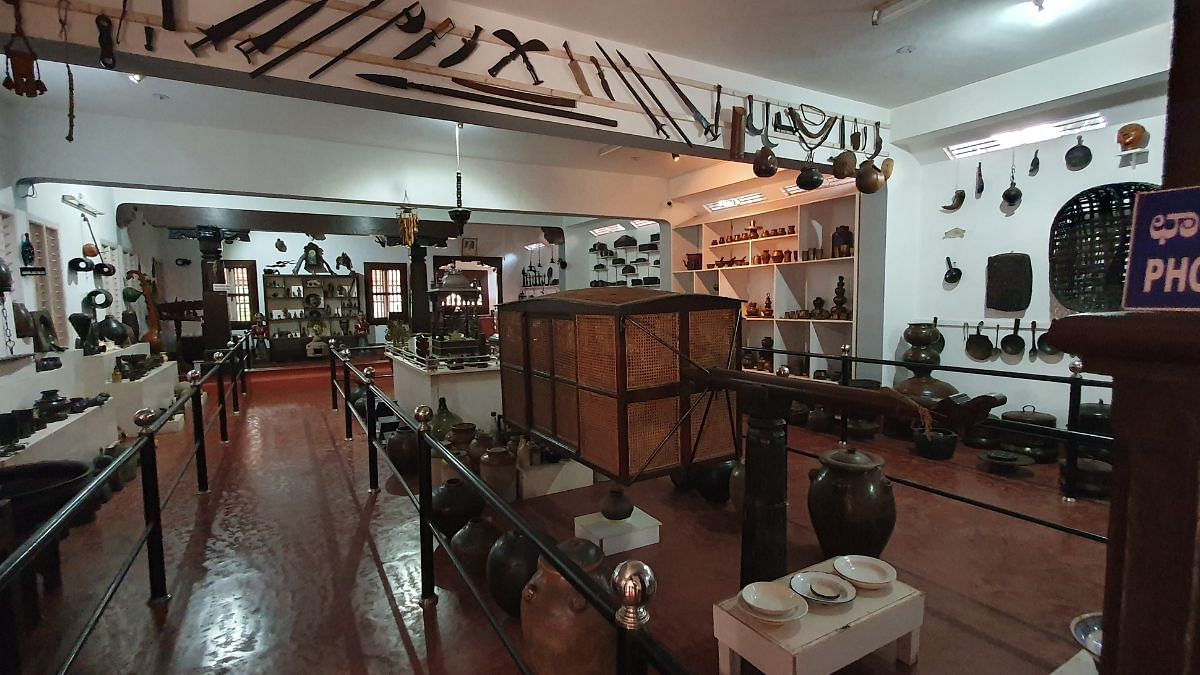
There are both literary resources and folklore to indicate the richness and contribution of Tulu people. These are regions that had trade with other empires such as Greece and the Romans as well as other mediterranean countries, as they are located on the Arabian sea. Historical documents show that pepper, cotton, linen, wool, precious stones and metals, betel leaves, ivory were traded from India to Egypt and finds reference in ‘Periplus of the Erythriah Sea’. Pliny, the Greek geographer who lived in 23 AD and his reference to ‘Mushairo’ — a trade and commerce hub — is believed to be Mangalore. Four of India’s nationalised banks trace their roots here and the ‘Udupi hotels’ model is testimony to the industrious nature of the Tuluvas. A large number of these establishments now sport a third language on their signboards: Tulu Lippi.
The Tulu Lippi can even be found on the Udupi Krishna Matha. The revered Pejawara Swami of the Matha signs only in this script, says Amrita Shetty.
Also read: ‘A Gujjar woman with a Dalit?’ Haryana family arrested for murder of daughter gets sympathy
‘Rani Abbakka’
Alva says he has all the material to present before the government if he is called to make a case for ‘Tulu’ as the second language. His report lies on top of a stack of files on his office table.
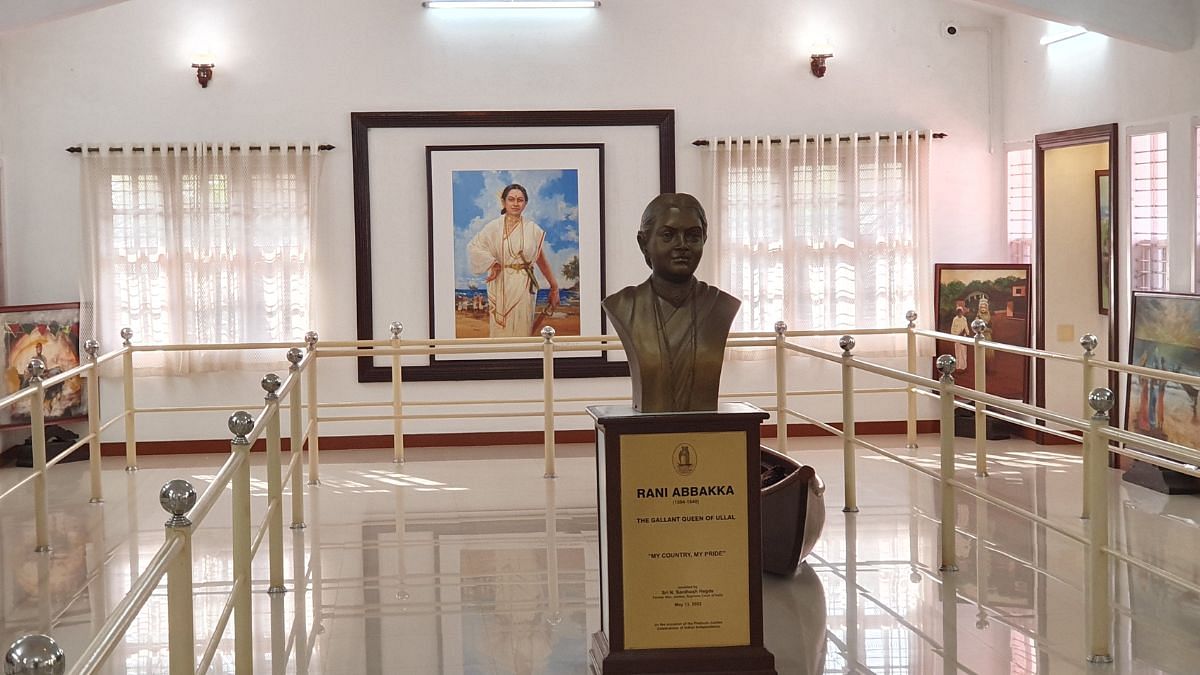
Then there are the likes of Poojary who have taken the historical route for the recognition of their language and culture.
He spent three decades setting up the ‘The Rani Abbakka Tulu Adhyayna Kendra’, a museum and library in Bantwal, just off the busy Mangaluru-Bengaluru highway. Poojary has collected thousands of tools and household items found in traditional Tuluva homes. ‘History through objects’ is his way of telling the Tuluva story to future generations. From weapons like swords and spears to a palanquin, coffins, chariots, from locks to whips and even weaving machines, the museum chronicles the Tulu people’s ways and life and history.
Over the years, he has invited artists to give form to Rani Abbakka (1525-1590) who was among the first to defeat colonising forces when she emerged victorious against the Portuguese. Paintings depicting historical moments adorn the walls of this private museum that’s kept in better shape than most public ones.
Poojary charges a Rs 25 entry fee at the museum and has published several books about Tuluva culture in the hope that the heritage of this proud and industrious community be passed on to the next generation.
“The young are now curious about our culture and I see that change,” he says.
But statehood is a dream that often sees generations struggle.
“Idhu namma jeevamanadalli sikkthatada gothilla (we are not sure we will get this in our lifetime),” says Poojary.
(Edited by Anurag Chaubey)


